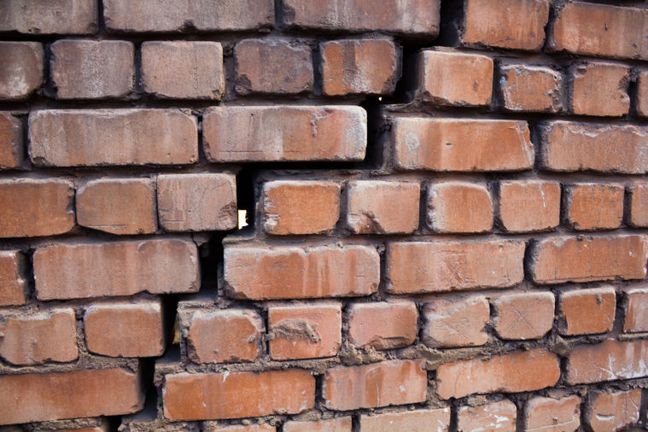Evaluating whether the statute of limitations bars a particular defect claim in construction defect litigation is critical to defending it. Patent defects (those which are “apparent by reasonable inspection” per Code of Civil Procedure 337.1(e)) have a statute of limitations which expires four years after the substantial completion of the improvement. In contrast, latent defects are those which are “not apparent by reasonable inspection” per Code of Civil Procedure section 337.15 (b). For latent defects, suit must be brought within three years of discovery of the defect, (Code of Civil Procedure section 338 (b)), but not later than 10 years after substantial completion of the improvement (Code of Civil Procedure section 337.15 (a)).
Typically, a lawsuit is filed alleging various defective conditions. Experts and attorneys then square off and argue whether each alleged defect is patent, or latent. The court’s determination as to whether a defect is patent or latent can make the difference between a viable, timely claim, and a time-barred claim.
The difficulty in making this determination arises when a latent defect, one not apparent by reasonable inspection, exists after a building is substantially completed, but damage relating to the condition does not manifest until years later. Is this condition a latent defect which, at some point in time “becomes” patent once the condition becomes apparent by reasonable inspection? Many defense attorneys make this argument, but is it a sound one?
Assume a window in a building completed in 2010 was installed without any waterproofing behind the walls. Since owners typically do not saw apart their buildings to inspect them, it would be difficult to argue this condition is anything but a latent defect – one not apparent by reasonable inspection.
Now assume that by 2018, the interior wall below the window has moisture stains which are apparent by reasonable inspection. If a suit was immediately filed for this condition, the property owner’s attorney would argue this is a latent defect, and the action is timely since it was filed within three years after discovery, and within 10 years of substantial completion. In response, the builder’s attorney would argue the defect “became” patent once the water damage was apparent by reasonable inspection, and the lawsuit is time-barred, as it was filed eight years after substantial completion – four years too late.
One of few cases which discuss the distinction between latent and patent defects in detail is Renown, Inc. v. Hensel Phelps (1984) 154 Cal.App.3d 416. In Renown, one of the issues was whether roofing defects in a winery purchased by appellant were patent or latent defects, and which statute of limitations applied. The court took a common sense approach and opened the dictionary. The court observed that a patent defect can be defined as one which is “open,” “evident” or “obvious,” while a latent defect is one which is “hidden,” “dormant,” or “potential.” Significantly, regarding the meaning of latent, the court noted the word “connotes that which is submerged and not clearly apparent or certainly present to any but a most searching examination, but whose significance and effect may later emerge or develop [emphasis added].” (Id. at 420). The latter phrase suggests that just because the manifestation of a given defect becomes apparent at a certain point in time, it does not “become” patent.
Reasonable minds may disagree, but the limited number of decisions discussing this issue suggest a defect is either latent or patent, and that a latent defect never becomes a patent one. An effective defense strategy demands a strategic evaluation of the totality of circumstances surrounding every defect allegation to determine which statute of limitations applies early in litigation.

 Author: Brian Woolfall
Author: Brian Woolfall
 Cannabis Workers Allege Quota to Trim 4 Pounds a Day Violates the California Labor Code
Cannabis Workers Allege Quota to Trim 4 Pounds a Day Violates the California Labor Code
 The Ninth Circuit Reminds Us: Every Word Matters
The Ninth Circuit Reminds Us: Every Word Matters
 NO WAY, PRO SE! The Consequences of Abusing the Judicial System as a Pro Se Litigant in Colorado
NO WAY, PRO SE! The Consequences of Abusing the Judicial System as a Pro Se Litigant in Colorado
 Victim of Financial Mismanagement or Unlawful Retaliation? New Jersey City University Program Founder Claims School Retaliated After Reporting Alleged Sexual Harassment
Victim of Financial Mismanagement or Unlawful Retaliation? New Jersey City University Program Founder Claims School Retaliated After Reporting Alleged Sexual Harassment
 “Real Housewives” Gets a Reality Check
“Real Housewives” Gets a Reality Check
 Missing a Chapter: Insufficiency of Expert Deposition Testimony in Medical Malpractice Litigation
Missing a Chapter: Insufficiency of Expert Deposition Testimony in Medical Malpractice Litigation
 Crash Course: Why Summary Judgment Misses the Mark in Illinois Multi-Cause Limousine Crash Collision
Crash Course: Why Summary Judgment Misses the Mark in Illinois Multi-Cause Limousine Crash Collision
 Bitter Truths: Lead, Cadmium, and Defective Pleadings in California Chocolate Class Action
Bitter Truths: Lead, Cadmium, and Defective Pleadings in California Chocolate Class Action
 The Law of Unintended Consequences: Including Insurance Brokers in Litigation Strategy Communication May Waive the Attorney-Client Privilege
The Law of Unintended Consequences: Including Insurance Brokers in Litigation Strategy Communication May Waive the Attorney-Client Privilege
 A Major Blow to the Practice of “Chalking” Tires to Support Issuance of Parking Tickets
A Major Blow to the Practice of “Chalking” Tires to Support Issuance of Parking Tickets
 California Employees Cannot Recover Back Pay Under the California Private Attorneys General Act
California Employees Cannot Recover Back Pay Under the California Private Attorneys General Act